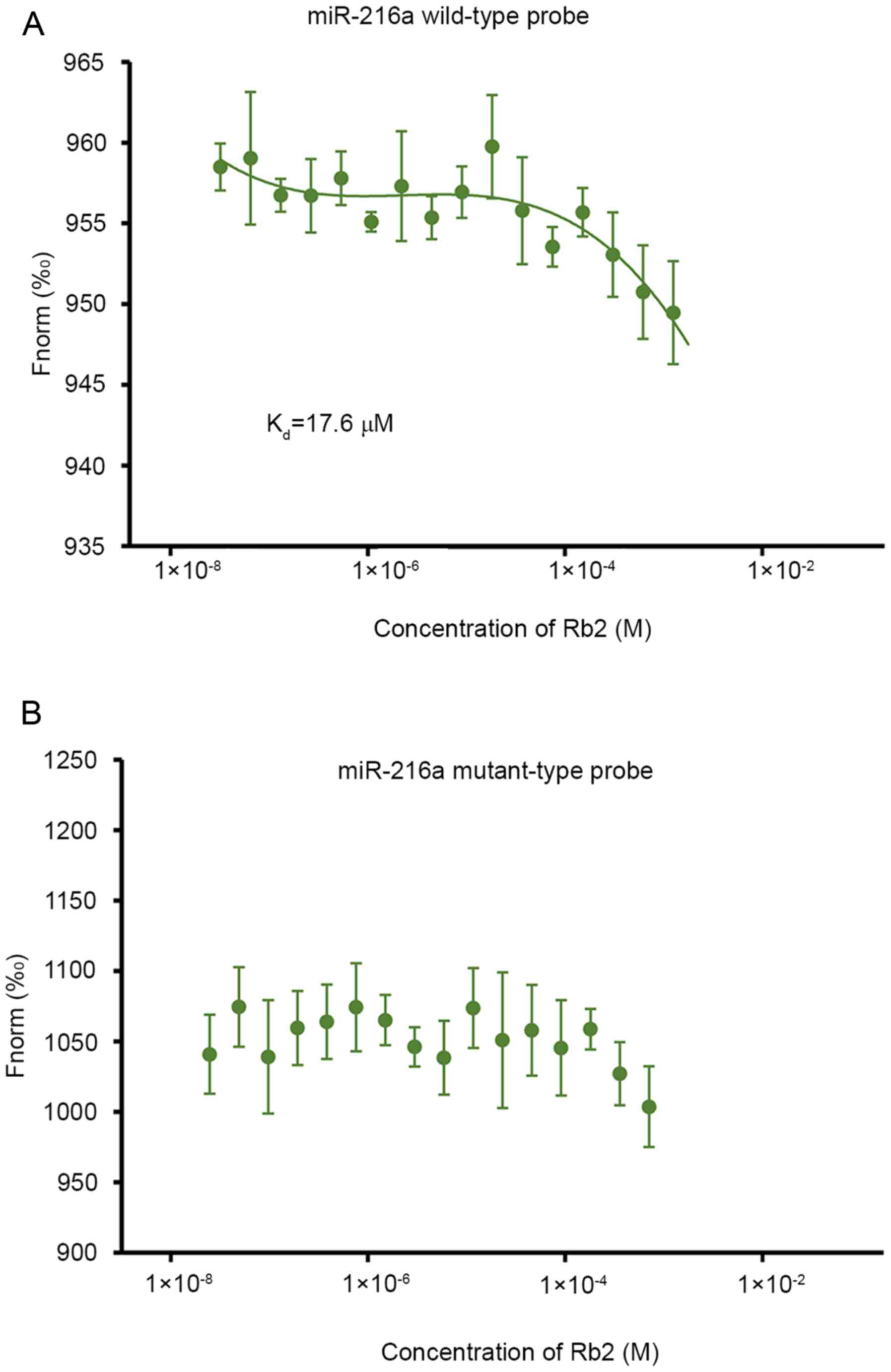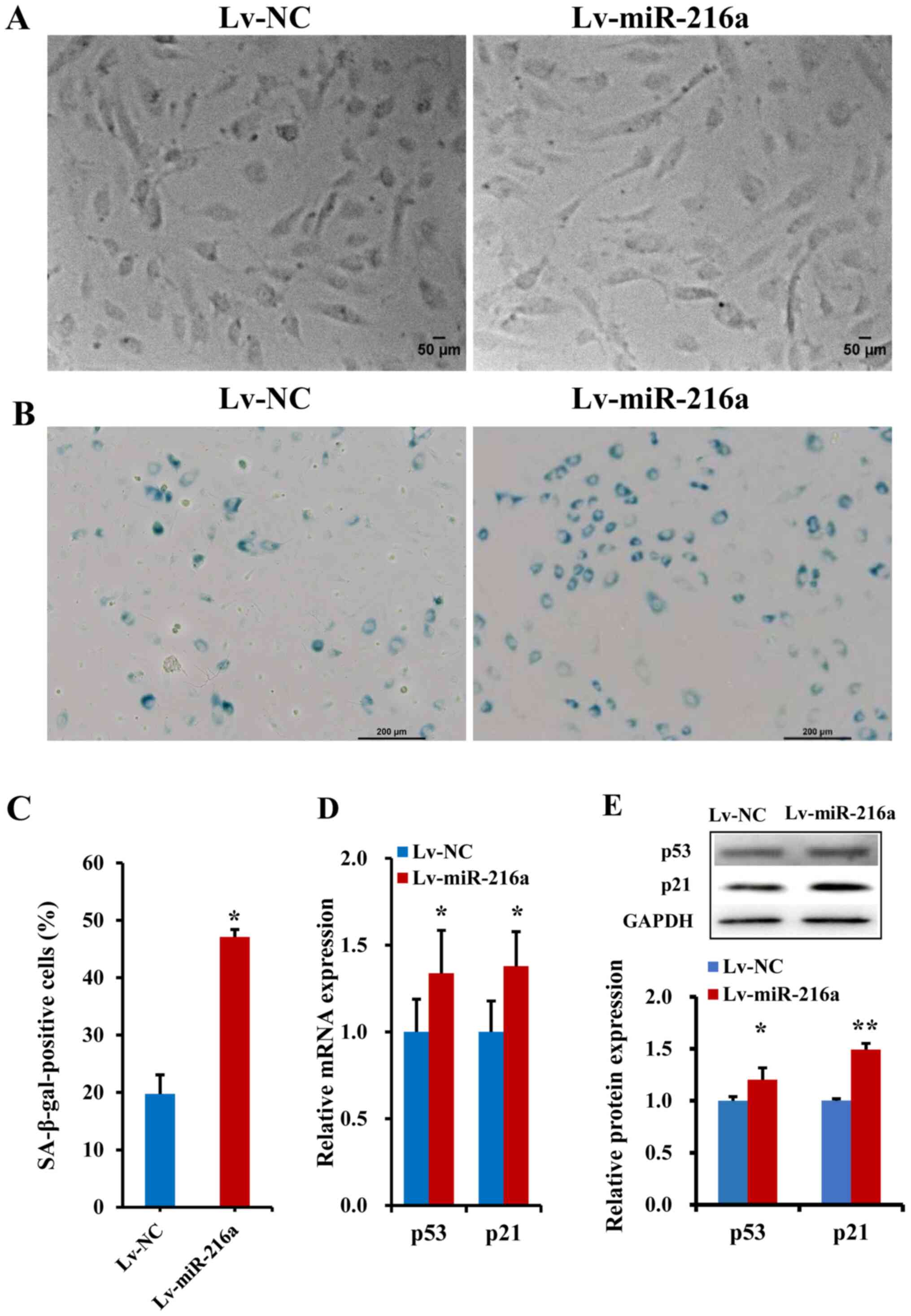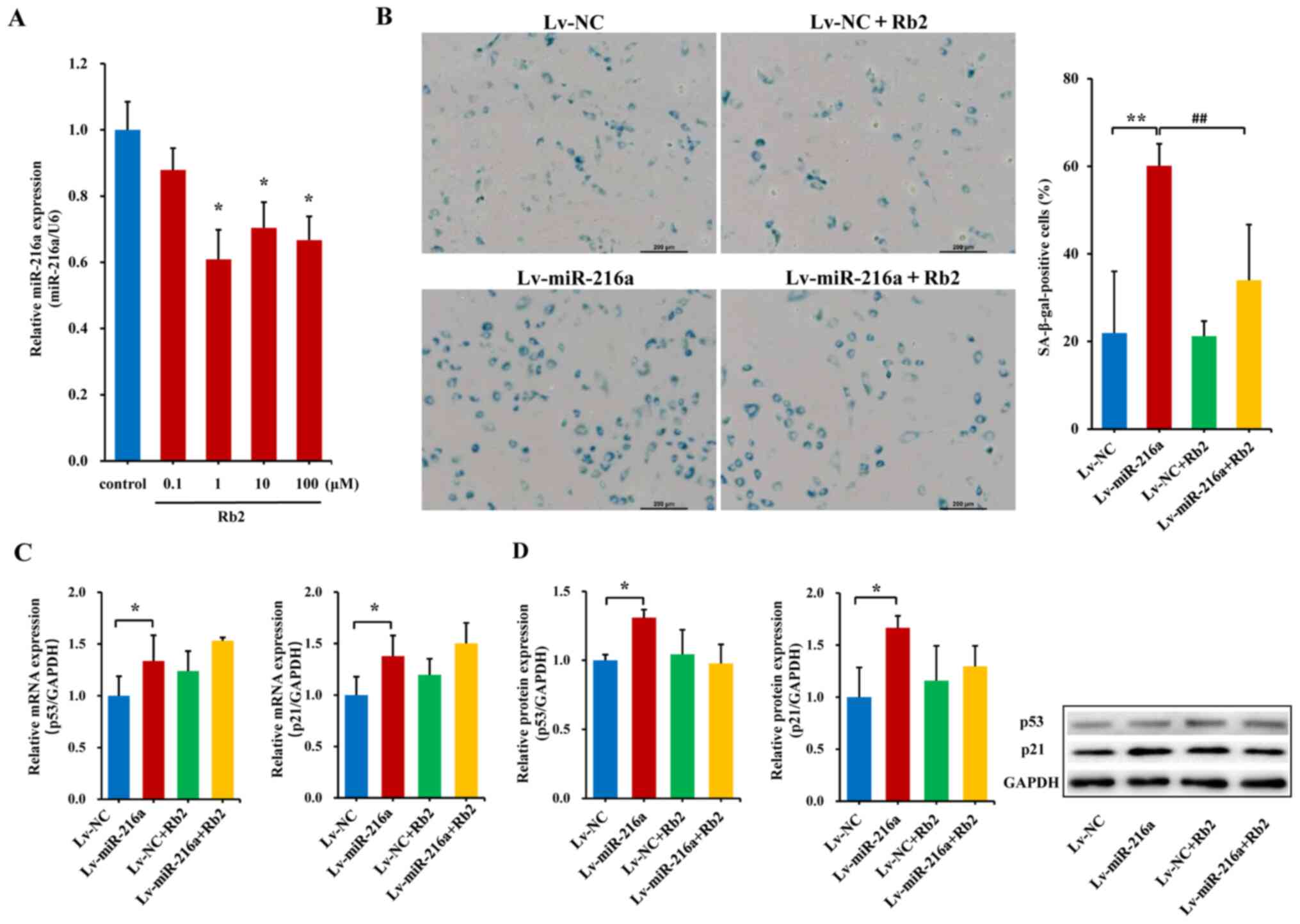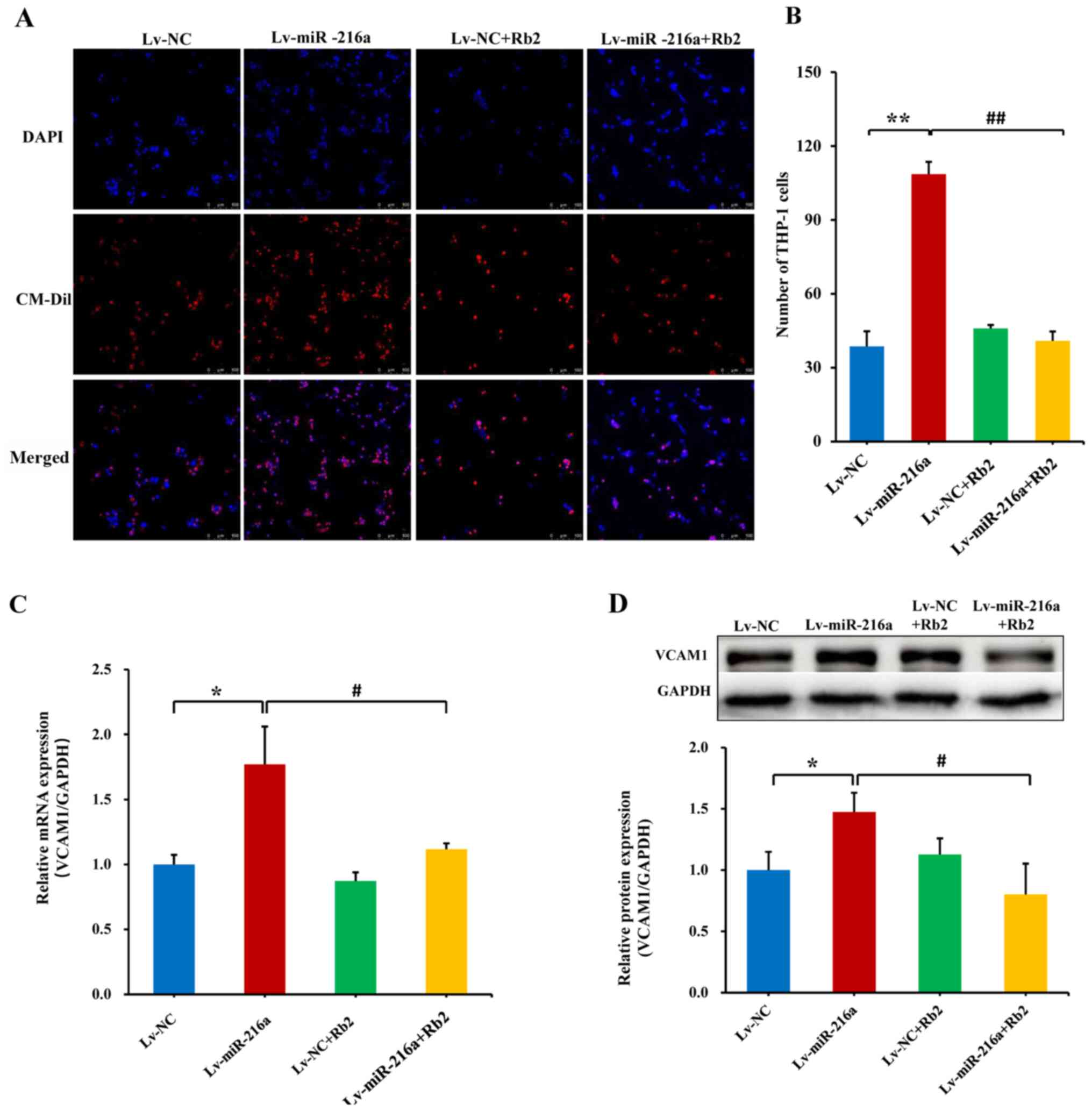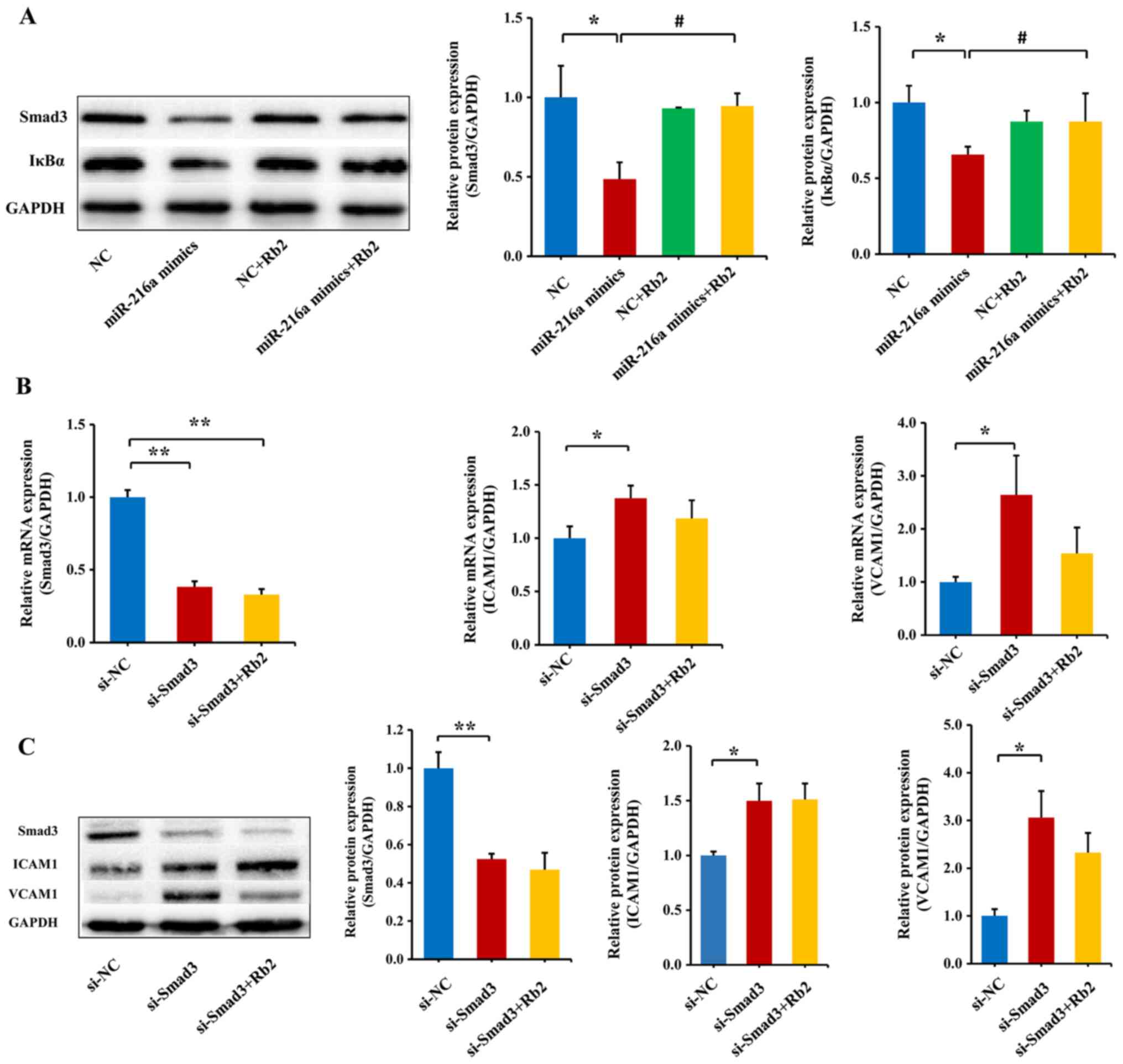|
1
|
Evans MA, Sano S and Walsh K:
Cardiovascular disease, aging, and clonal hematopoiesis. Annu Rev
Pathol. 15:419–438. 2020. View Article : Google Scholar : PubMed/NCBI
|
|
2
|
Schaftenaar F, Frodermann V, Kuiper J and
Lutgens E: Atherosclerosis: The interplay between lipids and immune
cells. Curr Opin Lipidol. 27:209–215. 2016. View Article : Google Scholar : PubMed/NCBI
|
|
3
|
Libby P, Ridker PM and Hansson GK:
Progress and challenges in translating the biology of
atherosclerosis. Nature. 473:317–325. 2011. View Article : Google Scholar : PubMed/NCBI
|
|
4
|
Ghosh A, Gao L, Thakur A, Siu PM and Lai
CWK: Role of free fatty acids in endothelial dysfunction. J Biomed
Sci. 24:502017. View Article : Google Scholar : PubMed/NCBI
|
|
5
|
Menghini R, Stöhr R and Federici M:
MicroRNAs in vascular aging and atherosclerosis. Ageing Res Rev.
17:68–78. 2014. View Article : Google Scholar : PubMed/NCBI
|
|
6
|
Childs BG, Gluscevic M, Baker DJ, Laberge
RM, Marquess D, Dananberg J and van Deursen JM: Senescent cells: An
emerging target for diseases of aging. Nat Rev Drug Discov.
16:718–735. 2017. View Article : Google Scholar : PubMed/NCBI
|
|
7
|
Feinberg MW and Moore KJ: MicroRNA
regulation of atherosclerosis. Circ Res. 118:703–720. 2016.
View Article : Google Scholar : PubMed/NCBI
|
|
8
|
Lu Y, Thavarajah T, Gu W, Cai J and Xu Q:
Impact of miRNA of atherosclerosis. Arterioscler Thromb Vasc Biol.
38:e159–e170. 2018. View Article : Google Scholar : PubMed/NCBI
|
|
9
|
Yang S, Mi X, Chen Y, Feng C, Hou Z, Hui R
and Zhang W: MicroRNA-216a induces endothelial senescence and
inflammation via Smad3/IκBα pathway. J Cell Mole Med. 22:2739–2749.
2018. View Article : Google Scholar
|
|
10
|
Hasegawa H: Proof of the mysterious
efficacy of ginseng: Basic and clinical trials: Metabolic
activation of ginsenoside: Deglycosylation by intestinal bacteria
and esterification with fatty acid. J Pharmacol Sci. 95:153–157.
2004. View Article : Google Scholar : PubMed/NCBI
|
|
11
|
Zhang Y, Han LF, Sakah KJ, Wu ZZ, Liu LL,
Agyemang K, Gao XM and Wang T: Bioactive protopanaxatriol type
saponins isolated from the roots of Panax notoginseng (Burk.) F. H.
Chen. Molecules. 18:10352–10366. 2013. View Article : Google Scholar : PubMed/NCBI
|
|
12
|
Huang Q, Wang T and Wang HY: Ginsenoside
Rb2 enhances the anti-inflammatory effect of ω-3 fatty acid in
LPS-stimulated RAW264.7 macrophages by upregulating GPR120
Expression. Acta Pharmacol Sin. 38:192–200. 2017. View Article : Google Scholar : PubMed/NCBI
|
|
13
|
Dai S, Hong Y, Xu J, Lin Y, Si Q and Gu X:
Ginsenoside Rb2 promotes glucose metabolism and attenuates fat
accumulation via AKT-dependent mechanisms. Biomed Pharmacother.
100:93–100. 2018. View Article : Google Scholar : PubMed/NCBI
|
|
14
|
Childs BG, Durik M, Baker DJ and van
Deursen JM: Cellular senescence in aging and age-related disease:
From mechanisms to therapy. Nat Med. 21:1424–1435. 2015. View Article : Google Scholar : PubMed/NCBI
|
|
15
|
Wienken CJ, Baaske P, Rothbauer U, Braun D
and Duhr S: Protein-binding assays in biological liquids using
microscale thermophoresis. Nat Commun. 19:1002010. View Article : Google Scholar
|
|
16
|
Jaffe EA, Nachman RL, Becker CG and Minick
CR: Culture of human endothelial cells derived from umbilical
veins. Identification by morphologic and immunologic criteria. J
Clin Invest. 52:2745–2756. 1973. View Article : Google Scholar : PubMed/NCBI
|
|
17
|
Ma L, Li G, Cao G, Zhu Y, Du MR, Zhao Y,
Wang H, Liu Y, Yang Y, Li YX, et al: dNK cells facilitate the
interaction between trophoblastic and endothelial cells via VEGF-C
and HGF. Immunol Cell Biol. 95:695–704. 2017. View Article : Google Scholar : PubMed/NCBI
|
|
18
|
Livak KJ and Schmittgen TD: Analysis of
relative gene expression data using real-time quantitative PCR and
the 2(-Delta Delta C(T)) method. Methods. 25:402–408. 2001.
View Article : Google Scholar : PubMed/NCBI
|
|
19
|
Dimri GP, Lee X, Basile G, Acosta M, Scott
G, Roskelley C, Medrano EE, Linskens M, Rubelj I, Pereira-Smith O,
et al: A biomarker that identifies senescent human cells in culture
and in aging skin in vivo. Proc Natl Acad Sci USA. 92:9363–9367.
1995. View Article : Google Scholar : PubMed/NCBI
|
|
20
|
Liu JW, Wei DZ, Du CB and Zhong JJ:
Enhancement of fibrinolytic activity of bovine aortic endothelial
cells by ginsenoside Rb2. Acta Pharmacol Sin. 24:102–108.
2003.PubMed/NCBI
|
|
21
|
Minamino T, Miyauchi H, Yoshida T, Ishida
Y, Yoshida H and Komuro I: Endothelial cell senescence in human
atherosclerosis: Role of telomere in endothelial dysfunction.
Circulation. 105:1541–1544. 2002. View Article : Google Scholar : PubMed/NCBI
|
|
22
|
Gimbrone MA Jr and García-Cardeña G:
Endothelial cell dysfunction and the pathobiology of
atherosclerosis. Circ Res. 118:620–636. 2016. View Article : Google Scholar : PubMed/NCBI
|
|
23
|
Ling H, Fabbri M and Calin GA: MicroRNAs
and other non-coding RNAs as targets for anticancer drug
development. Nat Rev Drug Discov. 12:847–865. 2013. View Article : Google Scholar : PubMed/NCBI
|
|
24
|
Dangwal S and Thum T: MicroRNA
therapeutics in cardiovascular disease models. Annu Rev Pharmacol
Toxicol. 54:185–203. 2014. View Article : Google Scholar : PubMed/NCBI
|
|
25
|
Rayner KJ, Esau CC, Hussain FN, McDaniel
AL, Marshall SM, van Gils JM, Ray TD, Sheedy FJ, Goedeke L, Liu X,
et al: Inhibition of miR-33a/b in non-human primates raises plasma
HDL and lowers VLDL triglycerides. Nature. 478:404–407. 2011.
View Article : Google Scholar : PubMed/NCBI
|
|
26
|
Agostini M and Knight RA: miR-34: From
bench to bedside. Oncotarget. 5:872–881. 2014. View Article : Google Scholar : PubMed/NCBI
|
|
27
|
Thakral S and Ghoshal K: miR-122 is a
unique molecule with great potential in the diagnosis, prognosis of
liver disease and therapy both as miRNA mimic and antimir. Curr
Gene Ther. 15:142–150. 2015. View Article : Google Scholar : PubMed/NCBI
|
|
28
|
Matsui M and Corey DR: Non-coding RNAs as
drug targets. Nat Rev Drug Discov. 16:167–179. 2017. View Article : Google Scholar : PubMed/NCBI
|
|
29
|
van Rooij E and Olson EN: MicroRNA
therapeutics for cardiovascular disease: Opportunities and
obstacles. Nat Rev Drug Discov. 11:860–872. 2012. View Article : Google Scholar : PubMed/NCBI
|
|
30
|
McClorey G and Wood MJ: An overview of the
clinical application of antisense oligonucleotides for
RNA-targeting therapies. Curr Opin in Pharmacol. 24:52–58. 2015.
View Article : Google Scholar
|
|
31
|
Fan R, Xiao C, Wan X, Cha W, Miao Y, Zhou
Y, Qin C, Cui T, Su F and Shan X: Small molecules with big roles in
microRNA chemical biology and microRNA-targeted therapeutics. RNA
Biol. 16:707–718. 2019. View Article : Google Scholar : PubMed/NCBI
|
|
32
|
Warner KD, Hajdin CE and Weeks KM:
Principles for targeting RNA with drug-like small molecules. Nat
Rev Drug Discov. 17:547–558. 2018. View Article : Google Scholar : PubMed/NCBI
|
|
33
|
Disney MD: Targeting RNA with small
molecules to capture opportunities at the intersection of
chemistry, biology, and medicine. J Am Chem Soc. 141:6776–6790.
2019. View Article : Google Scholar : PubMed/NCBI
|
|
34
|
Dong Y, Yan X, Yang X, Yu C, Deng Y, Song
X and Zhang L: Notoginsenoside R1 suppresses miR-301a via NF-κB
pathway in lipopolysaccharide-treated ATDC5 cells. Exp Mol Pathol.
112:1043552020. View Article : Google Scholar : PubMed/NCBI
|
|
35
|
Zheng HZ, Fu XK, Shang JL, Lu RX, Ou YF
and Chen CL: Ginsenoside Rg1 protects rat bone marrow mesenchymal
stem cells against ischemia induced apoptosis through miR-494-3p
and ROCK-1. Eur J Pharmacol. 822:154–167. 2018. View Article : Google Scholar : PubMed/NCBI
|
|
36
|
Cheng Z and Xing D: Ginsenoside Rg3
inhibits growth and epithelial-mesenchymal transition of human oral
squamous carcinoma cells by down-regulating miR-221. Eur J
Pharmacol. 853:353–363. 2019. View Article : Google Scholar : PubMed/NCBI
|
|
37
|
Rippe C, Blimline M, Magerko KA, Lawson
BR, LaRocca TJ, Donato AJ and Seals DR: MicroRNA changes in human
arterial endothelial cells with senescence: Relation to apoptosis,
eNOS and inflammation. Exp Gerontol. 47:45–51. 2012. View Article : Google Scholar : PubMed/NCBI
|
|
38
|
Xiong Y, Yepuri G, Forbiteh M, Yu Y,
Montani JP, Yang Z and Ming XF: ARG2 impairs endothelial autophagy
through regulation of MTOR and PRKAA/AMPK signaling in advanced
atherosclerosis. Autophagy. 10:2223–2238. 2014. View Article : Google Scholar : PubMed/NCBI
|
|
39
|
Dela Paz NG and D'Amore PA: Arterial vs.
venous endothelial cells. Cell Tissue Res. 335:5–16. 2009.
View Article : Google Scholar : PubMed/NCBI
|
|
40
|
Hirashima M and Suda T: Differentiation of
arterial and venous endothelial cells and vascular morphogenesis.
Endothelium. 13:137–145. 2006. View Article : Google Scholar : PubMed/NCBI
|
|
41
|
Fleenor BS, Marshall KD, Rippe C and Seals
DR: Replicative aging induces endothelial to mesenchymal transition
in human aortic endothelial cells: Potential role of inflammation.
J Vasc Res. 49:59–64. 2012. View Article : Google Scholar : PubMed/NCBI
|
|
42
|
Kaur J and Farr JN: Cellular senescence in
age-related disorders. Transl Res. 226:96–104. 2020. View Article : Google Scholar : PubMed/NCBI
|
|
43
|
Rufini A, Tucci P, Celardo I and Melino G:
Senescence and aging: The critical roles of p53. Oncogene.
32:5129–5143. 2013. View Article : Google Scholar : PubMed/NCBI
|















